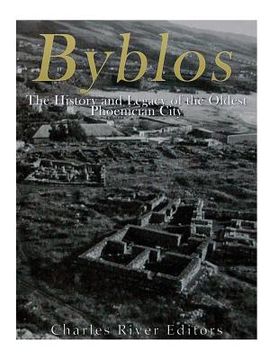Reseña del libro "Byblos: The History and Legacy of the Oldest Ancient Phoenician City (en Inglés)"
*Includes pictures *Includes ancient accounts of Byblos *Includes a bibliography for further reading Of all the peoples of the ancient Near East, the Phoenicians are among the most recognizable but also perhaps the least understood. The Phoenicians never built an empire like the Egyptians and Assyrians; in fact, the Phoenicians never created a unified Phoenician state but instead existed as independent city-state kingdoms scattered throughout the Mediterranean region. However, despite the fact there was never a "Phoenician Empire," the Phoenicians proved to be more prolific in their exploration and colonization than any other peoples in world history until the Spanish during the Age of Discovery. Byblos, known today as Jubayl, has been known by many names over the ages: the Phoenicians called it Gebal; for the Egyptians it was Kepen or Kupna; the Assyrians and Akkadians referred to it as Gubla (this name was repeated throughout the Old Testament); the Arabs called it Jbeil, and eventually the European Crusaders gave it the name of Gibelet. This lengthy etymology reflects the city's unique heritage significance, because Byblos is one of the oldest continuously inhabited cities ever to have existed in the world. The city was frequently mentioned in the great archives of antiquity, but its origins lie in the depths of prehistory. Its strategic location, with plenty of shipbuilding wood coming from the nearby mountains, made many powerful states eager to control the territory. Over time, Byblos and its surrounding area were occupied by the Amorites, Canaanites, Phoenicians, Assyrians, Persians, Macedonians, Romans, Arabs, Crusaders, Mamelukes, and Ottomans. From the earliest of times, Byblos was an active commercial center, trading extensively with Egypt, where it exported cedar wood from the Phoenician homelands in exchange for papyrus. As a result, Egypt would have a significant influence on the art and culture of Byblos, and the city quickly assumed a position of supremacy in the Mediterranean, thanks in part to its early use of writing. Archaeological evidence uncovered at the city show the existence of a Phoenician alphabet being used from as early as 1200 BCE, and the remains of Phoenician cities along the coast of Lebanon bear witness to the important role they played as a meeting place between the east and west, making it a focal point for the fusion of cultures in the ancient world. The Phoenicians did not generally seek political advantages or territorial expansion in their homeland-their interest was primarily in international trade. Much of the coastline of the area is heavily urbanized, which likely obscures many further interesting structures that might completely change the narrative of the site if they were uncovered. Moreover, many of the archaeological remains are openly exposed to the elements. The construction of a modern jetty has modified the coastal configuration, which has exacerbated the problem of wave energy from the strong storms that regularly batter the coast. Some attempts at coastal engineering have been made to prevent environmental change, and the site's environmental heritage significance has been recognized (being the first archaeological coastline in Lebanon to also become a protected natural landscape), but further steps will need to be taken preserve the unique heritage of Byblos. Byblos: The History and Legacy of the Oldest Ancient Phoenician City chronicles the tumultuous history of one of the most important cities of antiquity. Along with pictures depicting important people, places, and events, you will learn about Byblos like never before.

